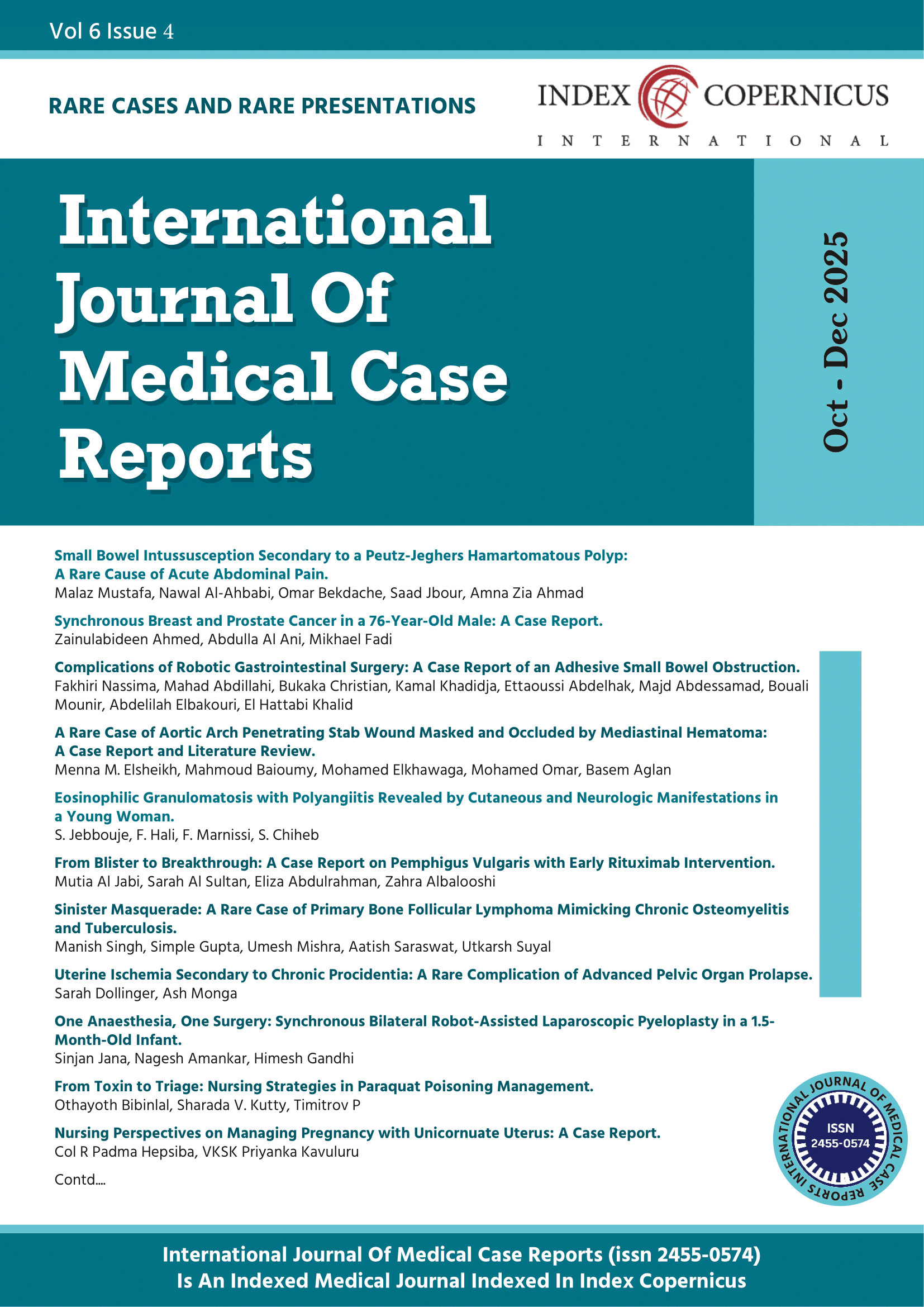Eosinophilic Granulomatosis with Polyangiitis Revealed by Cutaneous and Neurologic Manifestations in a Young Woman
Main Article Content
Abstract
Background:
Eosinophilic granulomatosis with polyangiitis (EGPA), formerly known as Churg-Strauss syndrome, is a rare immune-mediated vasculitis classified under anti-neutrophil cytoplasmic antibody (ANCA)-associated vasculitides. It typically involves small- to medium-sized vessels and manifests as a triad of asthma, peripheral eosinophilia, and necrotizing vasculitis with extravascular eosinophilic granulomas. Due to its heterogeneous presentation, diagnosis is challenging and relies on clinical, laboratory, radiological, and histopathological correlation.
Case report:
We present the case of a 37-year-old woman with a history of asthma who developed painful cutaneous lesions, sensory-motor neuropathy, and respiratory complaints. Laboratory investigations revealed marked leukocytosis with eosinophilia, elevated inflammatory markers, and positive ANA with negative ANCA. Skin biopsy confirmed necrotizing vasculitis with eosinophilic infiltration. Imaging demonstrated bilateral ground-glass opacities and peribronchovascular nodules, while bronchoalveolar lavage showed eosinophilic predominance. Electroneurography indicated early polyneuropathy. Based on asthma, eosinophilia, pulmonary
infiltrates, neuropathy, and histological findings, EGPA was diagnosed. The patient was treated with high-dose prednisone and cyclophosphamide pulses, leading to rapid hematological and clinical improvement, including resolution of cutaneous lesions and weight recovery, although neuropathic symptoms persisted.
Conclusion:
This case illustrates the multisystemic involvement of EGPA and highlights the diagnostic significance of cutaneous findings in the appropriate clinical context. EGPA should be suspected in patients with adult-onset asthma, unexplained eosinophilia, and systemic manifestations, even in the absence of ANCA positivity. Early recognition and initiation of immunosuppressive therapy are crucial to achieve remission and prevent irreversible organ damage.
